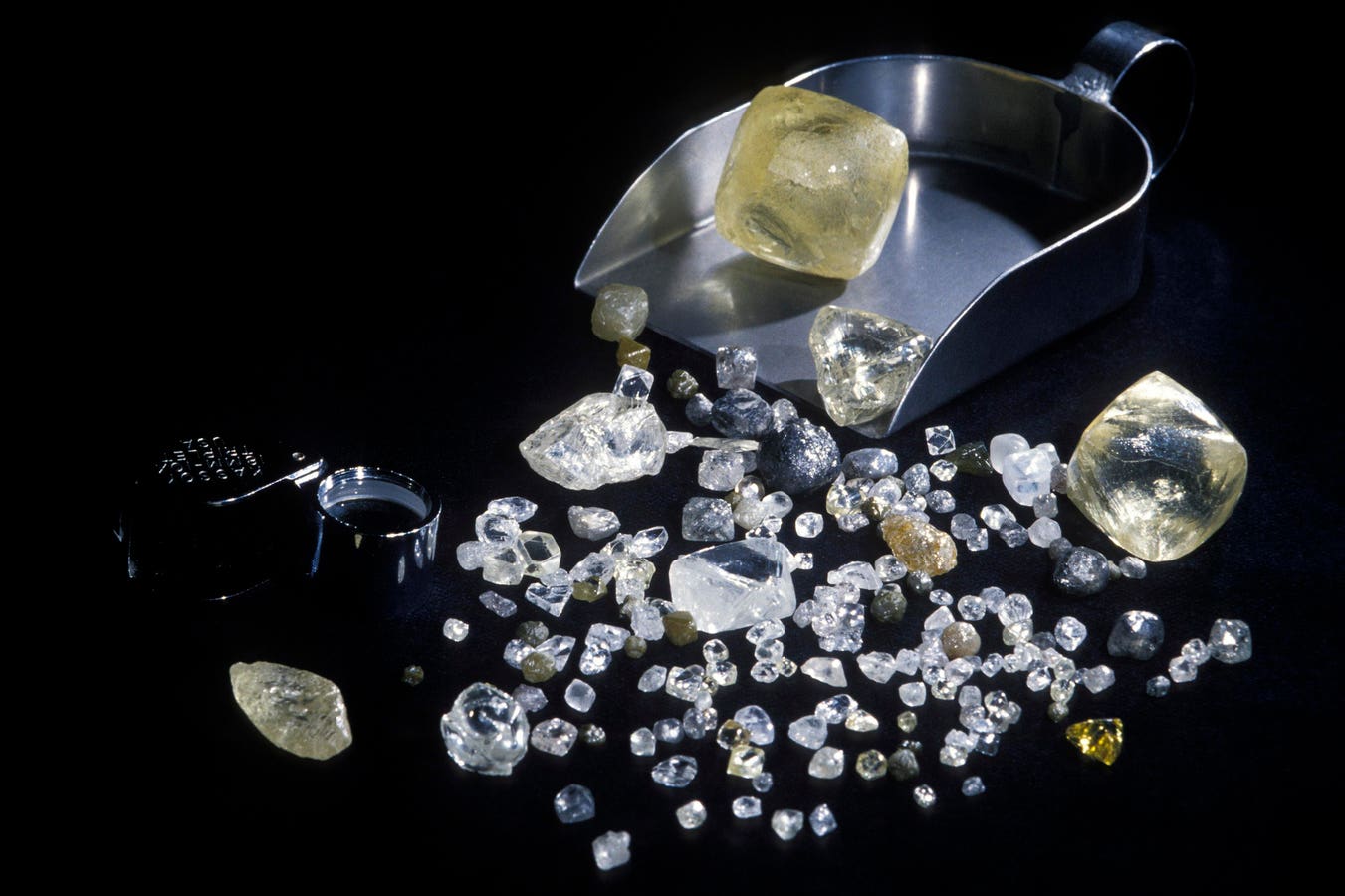A glut of diamonds, both mined and man-made, could be an early present for holiday season shoppers and a crisis for miners, manufacturers, and jewelers.
Mutiple negative factors, including global economic uncertainty and wars in Ukraine and the Middle East, are disrupting the diamond business at precisely the wrong time of the year.
A steep fall in prices and a lack of buyers has led to poor sales by De Beers, the diamond industry’s traditional leader, and prompted the launch of a $20 million marketing push to boost sales, led by the return of the company’s award-winning campaign from 1947: “A diamond Is Forever”.
The depth of the decline in demand was evident in a poor result at last month’s sales by De Beers which were down 61% on 12-months ago, followed by the cancellation of online diamond auctions for the rest of the year.
De Beers chief executive Al Cook said the business, which is a division of Anglo American, one of the world’s biggest miners, described the situation as “stock accumulation” in certain areas of the industry.
The next test of the market is scheduled to start tomorrow when De Beers opens the ninth sales cycle of the year, ending on November 12.
Cook said after the eighth sales cycle last month that the $20 million advertising campaign was designed “to help drive consumer demand during the holiday season”.
Notoriously cyclical and closely tuned to consumer confidence, diamond demand often fades in tough times, especially when potential buyers are battling high interest rates and cost of living pressures.
But this time there’s a new challenge, the growing share of the gem market falling under the control of man-made, or laboratory (lab-grown) diamonds.
Dismissed in their early years as unlikely to catch on, lab-grown stones have been slowly eating into the overall diamond market, espeically at the cheap end of the business.
But improvements in technology and with no barriers to new entrants the lab-grown sector has blossomed, crashing prices, and bruising the concept of a diamond being a high-end luxury product.
A measure of the lab-grown diamond glut is that last month saw the first major failure when U.S.-based WD Lab Grown Diamonds filed for bankruptcy, blaming a flood of cut-price gems from Indian and Chinese manufacturers.
De Beers has also been a player in the lab-grown business through its Lightbox subsidiary but has been forced to pull out of a major sector September, engagement rings, blaming low prices.
Another big diamond producer, Russia’s Alrosa, has suspended sales over the last two months as well as facing a possible ban on its products by European and U.S. jewelers.
Big name jewelers, including Tiffany and Van Cleef & Arpels have stopped stocking Russian diamonds.
Diamond research house Rapaport said last month that its RapNet diamond index showed that the price of a three-carat stone was down 15.3% on a year earlier, one-carat stones were down 25.9% and half-carat stones were down 31.6%.
The fall in prices and sluggish sales has sparked a debate in South Africa, once the centre of diamond mining, about whether De Beers makes a comfortable fit for Anglo American which makes most of its profits from industrial materials such as copper, iron ore, platinum, and coal.
Prominent publisher David McKay stirred a debate last week when asking in a stroy published on his Miningmx website whether diamonds “fitted the profile” of Anglo American, a suggestion quickly hosed down by Anglo American with a company spokesman dismissing the suggestion as “that old chestnut”.
Getting an accurate measure of the decline in the financial performance of De Beers is not easy because of its position inside a major mining house but the damage from the diamond glut can be measured by the stock market performance of pure-play diamond miners.
Two London listed miners, Gem and Petra, have seen their share prices fall by 64% and 51% respectively since the start of the year. Two Australian-listed miners, Lucapa and Burgundy are down 36% and 27% respectively.
Read the full article here





